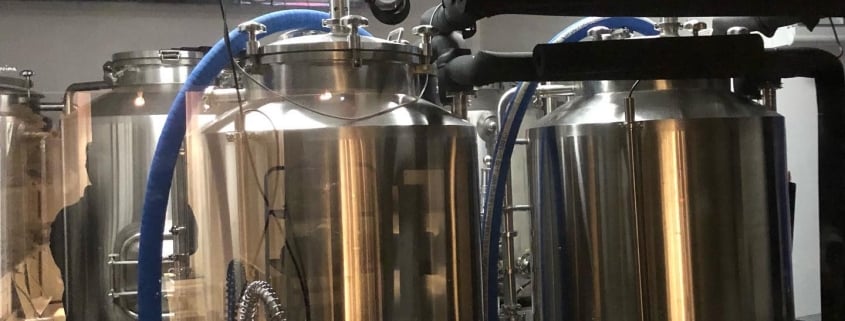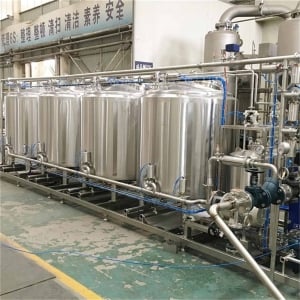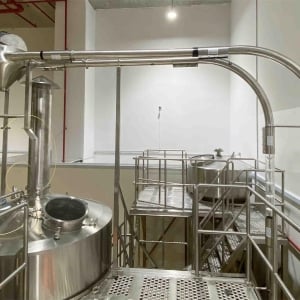Complete Beer Brewing Systems
Home beer brewing is becoming an increasingly popular hobby. A complete beer brewing system allows hobbyists to have precise control over the entire beer production process, from malting the grains to fermentation, packaging, and more. This guide will explore the key components of complete brewing systems, provide recommendations, and detail considerations for purchasing decisions.
Overview of Complete Beer Brewing Systems
A complete beer brewing system is equipment designed to handle the full beer brewing process end-to-end. This includes:
- Mashing – The process of steeping milled grains in water to convert starches to fermentable sugars. Requires a mash tun vessel and heating capabilities.
- Lautering – Separating the sweet wort from the grain material after mashing. Uses a lauter tun or a combined mash/lauter tun.
- Boiling – Boiling the wort with hops for flavoring and preservation. Needs a boiling kettle.
- Fermentation – Converting sugars into alcohol and CO2. Requires a fermenter vessel and temperature control.
- Packaging – Putting finished beer into bottles, kegs, or cans. Needs bottling/canning equipment.
Having the proper equipment for each stage allows homebrewers to precisely control variables like temperatures and timing, resulting in consistent, quality beer.
Key Components of a Complete Brewing System
The main components of a complete brewing system setup are:
Mash Tun / Lauter Tun – Insulated stainless steel vessel that holds the mash for saccharification and then separates the wort. Many systems use a single vessel with a false bottom or screen for mashing and lautering.
Brew Kettle – Large stainless pot where the wort is boiled with hops. Electric or gas-fired. Needs a high BTU burner to boil 5-10 gallons.
Fermenter – Food-grade plastic bucket or stainless steel conical vessel that holds beer during fermentation. Must have temperature control and airlock.
Accessories – Racks, pumps, chiller, cleaner, tubing, valves, filters, and controls. Automates manual tasks.
Packaging Tools – Kegging system, bottle/can filler, capper, sealer for packaging.
While basic systems can be manual, going with electric-automated controls allows simplifying multi-step processes into the push of a button. Modular systems also let hobbyists expand their production volume over time by adding vessels and upgrades.
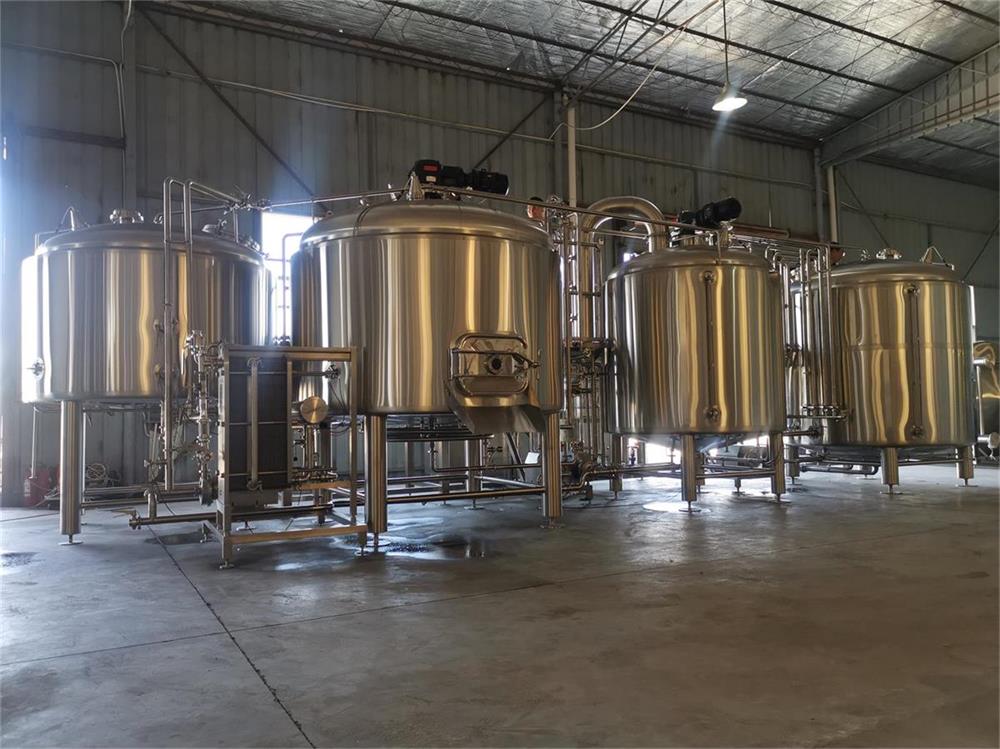
Types of Complete Brewing Systems
Here is the Types of Complete Brewing Systems section restructured in a table format:
| Type | Description | Price Range | Best For |
|---|---|---|---|
| All-In-One Electric | Fully automated electric brewing appliance with integrated elements (pump, heating, chiller, controller). All vessels in one unit. | $800 – $4,000 | Beginners looking for simplicity/convenience |
| Individual Vessels | Manual setup collecting individual mash tun, kettle, fermenter, accessories. Customizable. | $300 – $1,500 | Advanced brewers wanting flexibility |
| Turnkey Packages | Bundles multiple vessels, pumps, chiller together as ready-made kits. | $2,000 – $10,000 | Intermediates seeking semi-auto process |
| Multi-Vessel Electric | Automated control systems for individual mash, lauter, boil kettles. Highly customizable. | $6,000 – $15,000+ | Prosumers aiming for fully automated beer production |
Within these configurations, brewers can choose from 1 to 3 vessel brewing systems and 5 to 30 gallon batch sizes. More vessels and automated controls provide flexibility but increase costs. Consider how much beer you aim to brew monthly when deciding on capacity and functionality.
What To Consider When Purchasing a Complete System
Key purchasing factors for complete brewing systems include:
- Budget – Systems range from $500 to $15,000+ depending on automation and capacity
- Production Volume – Target batch sizes of 5, 10, 15 gallons or more. Scale up over time.
- Electric vs Gas – Electric offers more control but needs plugins. Propane is portable.
- Manual vs Automated – Consider ease of use vs control over variables.
- Cleaning Needs – Easy CIP (clean-in-place) abilities preferred
- Space Limitations – Measure area available in home for system footprint
- Time Investment – Fully automated systems save hours of manual labor
Additionally, purchasing complete systems from reputable brewing equipment manufacturers through local homebrew shops is recommended for after-sales service and guidance.
Overview of the Beer Brewing Process
Mashing and Lautering
The mash tun or lauter tun consists of a large stainless steel insulated vessel that can handle a fine crush of malted grains being mixed with hot water for saccharification to convert starches into fermentable sugars that yeast can eat.
Embedded heating elements and automated temperature control systems help maintain ideal temperature zones (150-160°F) throughout the 60-90 min mash, made possible by electric all-in-one systems and automated multi-vessel configurations.
This vessel also serves as the lautering stage using either a mesh screen false bottom or separate internal grain filter system to separate the sweet liquid wort from the grain bag. Further filtration and sparging (rinse) steps help extract more sugars from the grain material.
Key Variables:
- Mash tun size – 5 to 30 gallon batches
- Temperature ranges – Automatic vs manual
- Filtration method – Mesh false bottom, pipe manifold, rotating filter
Wort Boiling
The boiled wort is then transferred to the brew kettle for boiling using an internal or external heating source. Most systems use 2000-5000W power electric heating elements, while some brewers opt for portable propane burner setups.
The boiling stage allows concentrating sugars, extracting hop flavors, sterilizing the wort, and stopping enzymatic activities – requiring precise temperature control between 210°F and 212°F for 60-90 minutes typically.
Automated variables like circulation pumps and timed stages make this process hassle-free for homebrewers and ensure repeatability.
Key Variables:
- Power rating – determines max wort volume
- Automatic vs manual – preset times & temps
- Heat control response – reduce boiling over events
Fermentation & Maturation
Once cooled via wort chillers, the liquid is transferred to fermenters made from food-grade plastic or stainless steel. Here yeast is pitched to start alcohol fermentation over 14-21 days typically.
Temperature control is critical throughout, with different yeast strain preferences between 60-70°F. Electric heating belts, cooling jackets, or conical fermenters with integrated cooling help maintain optimal zones automatically.
Multiple fermenters allow brewing in stages for continuous production. Hydrometers help monitor progress by measuring specific gravity.
Key Variables:
- Number of vessels – allow multiple batches
- Temperature control method – belts, jackets, integrated cooling
- Material – plastic (cheap), stainless (best)
- Conical vs cylindrical – Conical easier to clean
Packaging & Dispensing
After fermentation completes, beer moves to a serving tank for clearing, carbonating, and packaging.
Fully equipped systems include:
- Kegging components – Lines, couplings, taps
- Bottle/can filler
- Capper/crowner/seamer stations
- Filter modules -Removes haze particles
Advanced systems allow packaging right from the fermentation vessel using glycol chilling, integrated carbonation stones, and custom taproom setups – automating the full process.
Thus from raw ingredients to finished packs of beer, complete brewing systems let homebrewers recreate the microbrewery experience!
Customization Options
While all-in-one electric brewing appliances provide an easy entry point, they limit customization and production capacity.
Modular configurations of individual vessels provide extreme flexibility for customizing automation:
| Component | Customization Options |
|---|---|
| Mash Tuns | 1-4 tuns, 5-30 gallon capacity, manual/automated |
| Lauter Tuns | Integrated systems or individual |
| Brew Kettles | 5-30 gallon , gas/electric heated, automated timing/temp |
| Fermenters | 1-20 conical/cylindrical, integrated cooling available |
| Serving Tanks | Glycol chilling, carbonation, filtration |
| Packaging | Semi/fully automated canning/bottling |
| Piping | Custom manifold designs, flow valves |
Customizing the Brewhouse
The brewhouse refers to the front-end mashing, lautering, and boiling stages. This can be customized by:
- Adding more mash tuns for larger batches or brewing multiple beers
- Upgrading to automatic temperature controls and smart pumps
- Customizing the heights, dimensions, and angle of vessels
- Integrating a sparge arm water delivery system
- Adding motorized grain mills for fresh on-demand milling
- Scaling up the main brew kettle size from 5 barrels to 30 barrels
Customizing Fermentation Infrastructure
The fermentation stage can be upgraded by:
- Adding more conical fermenter vessels – from 3 to 30 typically
- Integrating glycol chilling, heating jackets, and temperature modules
- Installing real-time gravity tracking systems
- Automating temperature, pH, foam control, inoculation points
- Adding fermentation room clean utilities like CIP spray balls
Customizing Filtration and Carbonation
Final beer processing can get advanced with:
- Centrifuges for rapid yeast harvesting
- Plate filtration modules for clarity
- Carbonation stones to purge oxygen
- Blended gas CO2/N blends to optimize carbonation
- Using aseptic can/bottle fillers guarantee shelf life
- Automating labeling, dating, shrink sleeves
Customizing Quality Control and IoT
Quality modules help dial-in consistency:
- In-line specific gravity sensors
- Turbidity and haze meters
- Microscopic particle counters
- Foam stability detectors
- Remote tank monitoring via mobile apps
- Integrating data analytics for process optimization
And FULLY customized commercial-scale automated brewhouses provide cutting-edge functionality mimicking modern microbreweries. Homebrewers can work hand-in-hand with industrial engineers to build their dream systems.
The possibilities are endless for tech-savvy beer artisans when designing their modular breweries. Budget, production targets, and imagination set the limits.
Supplier and Price Range Comparison
There is a wide range of complete brewing system suppliers catering to different needs and budgets:
| Brand | Price Range | Offerings |
|---|---|---|
| Blichmann | $2,000 – $15,000 | High-end electric systems & kettles |
| Spike Brewing | $1,000 – $6,000 | Manual and electric systems |
| Clawhammer Supply | $900 – $4,000 | All-in-one electric systems |
| SS Brewtech | $1,500 – $8,000 | Stainless conicals & accessories |
| Grainfather | $800 – $1,500 | Electric all-in-one appliances |
| Robobrew | $300 – $1,200 | Electric all-in-one budgets |
| Northern Brewer | $500 – $3,000 | Manual kits & equipment |
Pricing varies based on construction materials used (stainless vs plastic), scale of automation, batch size capacity, and additional accessories. Generally expect to spend $1,500 to $4,000 for a decent electric 5 gallon setup able to produce around 240 bottles per month.
Installation, Operation, and Maintenance
Setting up a complete brewing system takes planning of brewery space, electrical, plumbing and layout considerations before positioning equipment. Some tips:
- Review equipment dimensions to map positioning
- Flooring should be anti-slip, waterproof, and chemical resistant
- Install sufficient electrical outlets & breaker capacity for heating elements
- Wire pumps and electronics to control panels or automation systems
- Set up cleaning station with hot water access for CIP spray balls
- Map out piping runs & slope angles to leverage gravity flow
Operation procedures vary by system but generally involve:
- Validating water profile suitability for beer style
- Milling grains to proper crush sizes
- Programming or initiating heating steps per recipe
- Maintaining temperatures and flows at each stage
- Monitoring fermentation progress with hydrometers
- Cold crashing & transferring to packaging stage
Lastly, thoroughly cleaning and sanitizing the entire system between each use as well as periodic preventative maintenance is vital for maximizing production uptime and consistent flavors. Following manufacturer guidance on servicing components like pumps, valves, and heating elements reduces long term issues.
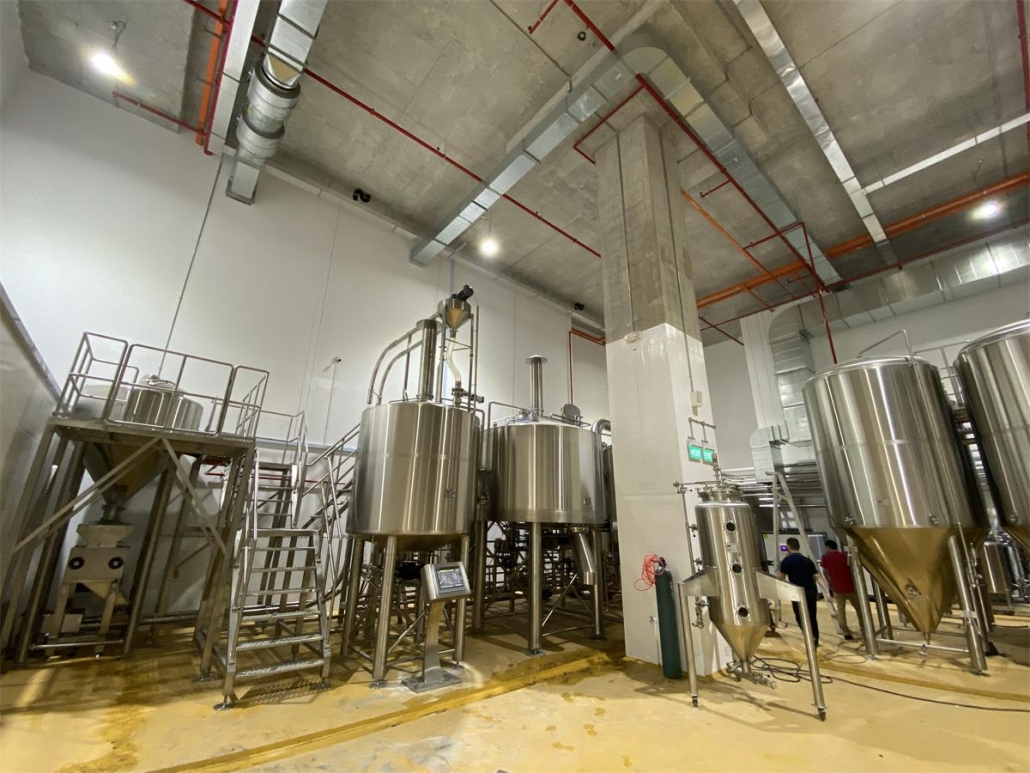
How to Choose the Right Complete System Supplier
Key criteria brewers should evaluate when selecting a complete brewing system supplier includes:
Reliability & Reviews – Proven track record in market with positive reputation
Customization Abilities – Flexibility to match current & future production targets
Automation & IoT – Level of equipment smarts & precision variables control
Available Support – Installation help, responsive technical teams for troubleshooting
Maintenance & Training – Ability to easily clean & maintain system; staff training options
Materials & Construction – Commercial grade stainless steel preferable for longevity
Order Fulfillment – Delivery times and completeness of order; Some systems have modular components to assemble while others ship as ready-made turnkey setups. Review lead times.
Cost Per Batch – While upfront pricing matters, so does overall value on a per-batch basis over years which depends on automation capabilities and maintenance requirements.
Evaluating suppliers on these aspects helps brewers choose systems providing the best long term productivity for their brewery goals and budget. Local equipment retailers can also guide decision making.
Pros vs Cons of Complete Brewing Systems
Pros:
- Greater control over entire beer production process
- Ability to customize flavors and recipes
- Optimized workflows with automated features
- Achieve consistency between batches
- Flexibility to experiment with styles
- End-to-end solution without piecing parts
- On-site freshness and serving options
- Cost savings compared to buying beer
Cons:
- High upfront equipment investment
- Learning curve to master systems
- Manual options involve heavy lifting
- Require floor space for hardware footprint
- Ongoing ingredient costs
- Additional maintenance requirements
- Time commitment for brew days and cleaning
Overall, complete electric brewing systems provide homeowners the microbrewery experience right at their bar countertops!
After the initial purchase, costs work out to under $1 per beer meaning the investment pays for itself over time for passionate homebrewers. For those short on space, standalone all-in-one brewing appliances offer flexibility but limit batch volumes. Manual configurations keep start up affordable but add labor.

